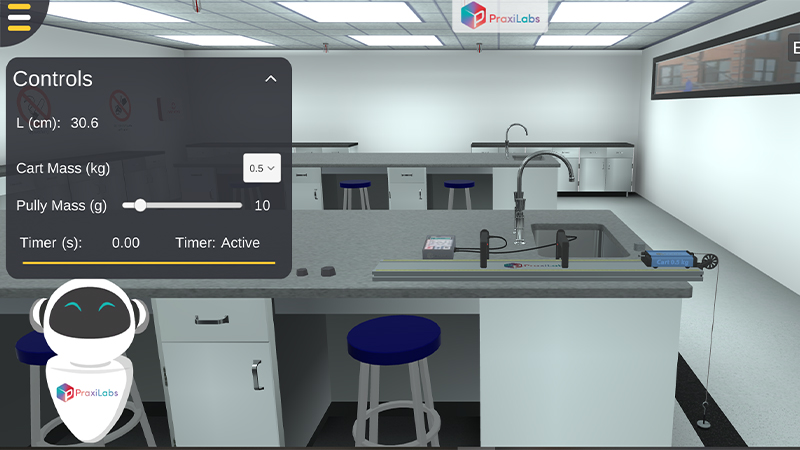





2.5M+
Active Users Worldwide
80%
Improved Learning Retention
60%
Reduction in Laboratory Costs
Determination of the acceleration due to gravity using Newton's second law simulation.
Newton’s second law predicts that acceleration is a function of force and mass. To test this mathematical relationship, a good experiment must isolate each contributing component and vary it independently of the others. In the virtual lab Newton's second law simulation, we can measure the acceleration of an object by varying the force acting upon the object without changing its mass, and by varying the object’s mass without changing the force In Newton's second law simulation, we will determine the acceleration due to gravity by considering that the sum of the object mass and the applied mass is not constant.
By the end of Newton's laws of motion simulation, students will learn:
The acceleration of an object depends directly upon the net force acting upon the object, as the force acting upon an object is increased, the acceleration of the object is increased
The acceleration of an object depends inversely upon the mass of the object, as the mass of an object is increased, the acceleration of the object is decreased.
The acceleration of an object as produced by a net force is directly proportional to the magnitude of the net force, in the same direction as the net force, and inversely proportional to the mass of the object.
Newton’s second law is expressed mathematically as
F = ma (1) where
a is the acceleration produced in a body
m mass of the body
F The applied force of the body
At Newton's second law simulation,




